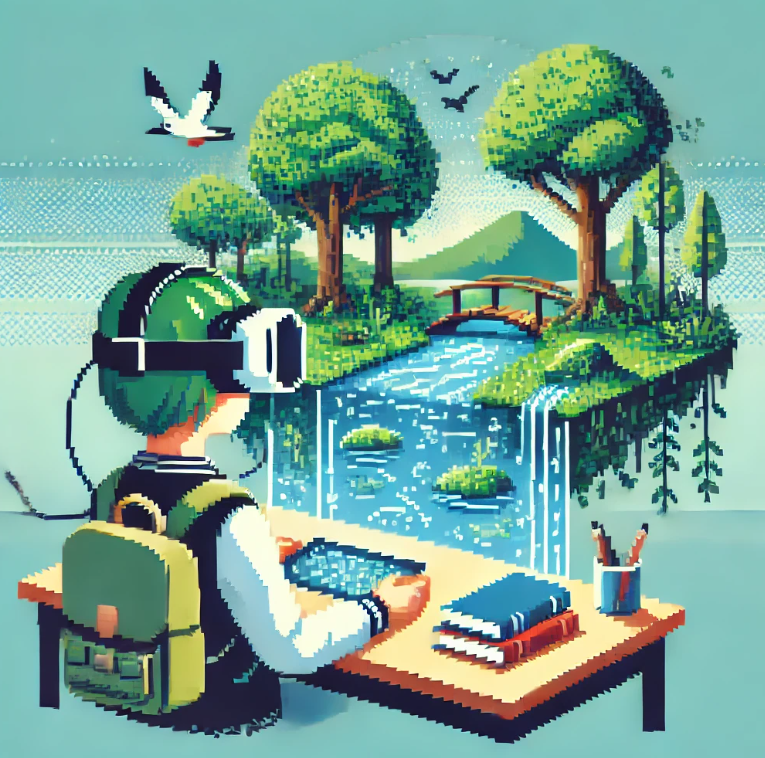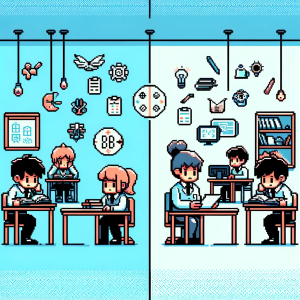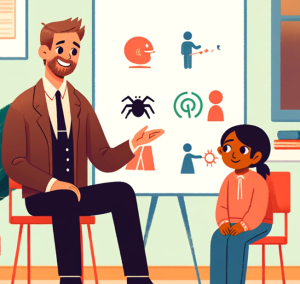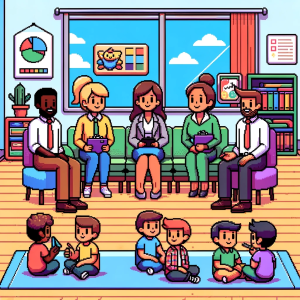
Virtual Nature: The New Frontier in Managing Student Anxiety
A Digital Oasis for Student Minds
Imagine standing on a tranquil beach, the waves lapping at your feet, or walking through a lush forest, the rustle of leaves above you. Now, imagine experiencing all of this from your dorm room or classroom. With the rise of virtual reality (VR), students can now immerse themselves in these natural environments without stepping outside. But can these digital escapes actually improve mental health? Recent research suggests they can, particularly for managing anxiety—a growing concern among young people today.
The Power of Nature, Virtual or Real
For years, we’ve known that spending time in nature can significantly improve mental health. Countless studies have shown that being outdoors, surrounded by greenery, can reduce symptoms of anxiety, depression, and stress. But what happens when stepping outside isn’t possible? Whether due to urban living, physical limitations, or global pandemics, many people—especially students—find themselves cut off from these natural benefits. This is where virtual nature comes in.
Virtual Reality: A New Tool for Mental Health
Virtual reality offers a unique solution by creating immersive, lifelike experiences of nature. Previous studies on VR’s mental health benefits have primarily focused on short-term exposure—a quick walk through a digital park or a moment on a simulated beach. However, a recent study has taken this concept further, exploring what happens when college students regularly engage with virtual nature over several weeks. The results are promising, particularly for those struggling with anxiety.
The Study: Virtual Nature’s Impact on Anxiety
In this groundbreaking study, 40 college students were split into two groups. One group experienced daily sessions of virtual nature, while the other did not. The virtual nature experiences were brief—only four minutes each—but consistent, occurring five to six times a week over several weeks. The researchers specifically looked at how this intervention affected anxiety, depression, and rumination (the repetitive focus on distressing thoughts, often linked to depression).
The findings were clear: students who regularly engaged with virtual nature showed significant reductions in anxiety, particularly in what psychologists call “anxious arousal” (panic) and “anxious apprehension” (worry). Interestingly, these benefits were more pronounced in women and in students who were already familiar with VR technology or had previous positive experiences with outdoor nature.
Why Only Anxiety? The Role of Nature Connectedness
While the study found strong evidence that virtual nature can help reduce anxiety, it didn’t show the same benefits for depression or rumination. This could be because the students already had a high level of “nature connectedness”—a term researchers use to describe how emotionally and psychologically tied we feel to the natural world. For students who already feel connected to nature, the extra boost from a virtual experience might not be enough to significantly impact depression. However, for anxiety, which can be more immediate and responsive to environmental changes, the calming effects of virtual nature still made a noticeable difference.
Real-World Implications: How Schools Can Use Virtual Nature
So, what does this mean for parents, educators, and school mental health professionals? First, it highlights the importance of integrating innovative tools like VR into student mental health strategies. With anxiety rates rising among young people, schools need accessible, effective interventions that can be easily implemented. Virtual nature could be one such tool, especially for students who don’t have regular access to outdoor spaces.
Consider a high school where students can take a quick virtual walk through a forest before a big exam or an elementary school where children can relax in a virtual meadow after a stressful day. These short, immersive breaks could become a regular part of the school day, helping to reduce anxiety and improve overall well-being.
Moreover, this study suggests that virtual nature experiences could be tailored to meet the needs of different students. For those already familiar with VR or who have positive associations with nature, these interventions could be particularly effective. Schools could consider offering virtual nature as part of a broader mental health program, alongside traditional counseling and outdoor activities.
A Note on Accessibility and Inclusivity
It’s important to recognize that not all students have equal access to VR technology. Schools considering this approach must ensure that these tools are available to everyone, not just those who can afford personal devices. Partnerships with technology companies, grants, and community initiatives could help make virtual nature a universal resource in educational settings.
Additionally, schools should be mindful of the potential for “cybersickness”—a type of motion sickness some people experience when using VR. Careful selection of VR content and devices, along with options for different levels of engagement, can help mitigate these risks.
The Future of Mental Health in Education
As we continue to explore the intersection of technology and mental health, virtual nature stands out as a promising area of innovation. While it may never replace the experience of being in real nature, it offers a valuable alternative for those who need it most—students navigating the pressures of academic life without easy access to green spaces.
Questions to Ponder
How do you think virtual nature could be integrated into your school or community? Could this approach help students you know who struggle with anxiety?
Step into the Future of School Psychology!
Engage with the dynamic field of educational mental health for only $5 monthly. This Week in School Psychology offers you a gateway to understanding and applying crucial psychological findings. Enjoy concise, powerful updates that make a difference. Subscribe and join a community dedicated to knowledge and impact. Take advantage of our special yearly rate and lead the way in educational innovation!



